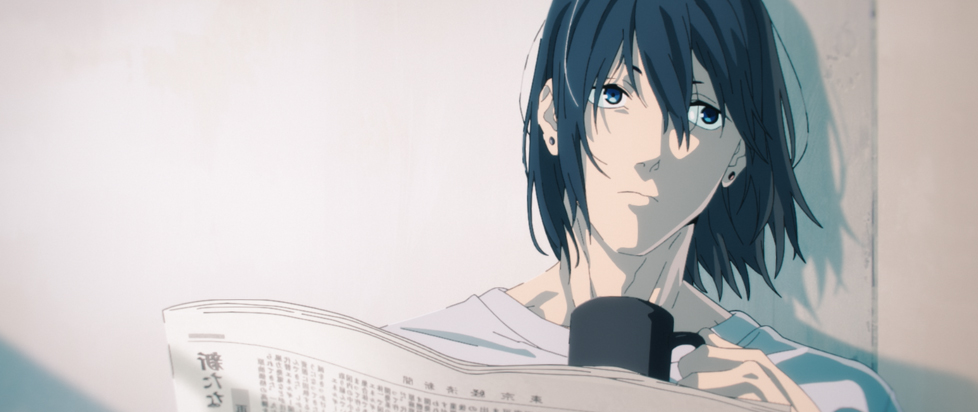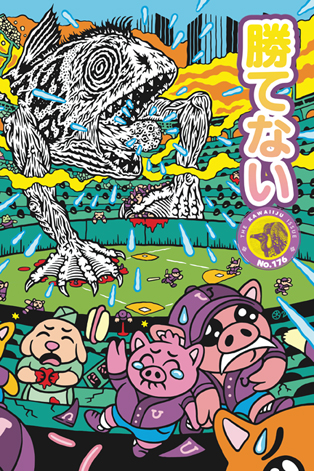
Hoplophobia

This column is a reprint from Unwinnable Monthly #176. If you like what you see, grab the magazine for less than ten dollars, or subscribe and get all future magazines for half price.
———
Peripatetic. Orientation. Discourse.
———
Chainsaw Man is my favorite ongoing work of apocalypse fiction. It’s a transgressive shonen manga that peels away its adolescent masculine hypersexuality with class commentary, familial trauma and strong women that will kill you. In its relatively short run time (the entire self-contained “first part” is 97 chapters), mangaka Tatsuki Fujimoto consistently teases apart the conventions and form of shonen with action, horror, thrills and, perhaps, romance.
And in the great tradition of obscuring the true big bad of its story, the ostensible antagonist of Chainsaw Man is a compelling kaiju that pokes fun at the United States’ firearm fetish.
The world of Chainsaw Man is filled with devils, the corporeal form of human phobias given power by fear itself. Most are malevolent, some indifferent to humans. The more humans fear something, the more powerful its devil grows. The Chicken and Tomato Devils are small nuisances while Bat and Zombie Devils can kill hundreds if not stopped. Fujimoto’s brilliance is revealed in how he corporealizes the more abstract devils (Darkness, Falling, Future) and how he identifies, personifies and empowers fears we may not even think of as powerful forces on our psyches (Control, Eternity, Omniscience).
Governmental and contractor devil hunters fight the more pernicious devils terrorizing humans by utilizing costly contracts, sacrificial deals made with devils to grant humans superpowers or forge alliances in battle. A hunter may wield a powerful sword that takes years off their life or give up a limb to call upon a devil in battle. Devil hunters are often scarred and disabled by their contracts alone, and even plot armor isn’t enough to avoid becoming cannon fodder in the battles that unfold.
Given this power imbalance, humans at one point in this deviant timeline tried using guns for defense. But as it does in our world, the prevalence of guns brought gun-related crime. Thus, the fear of guns rose until, one day, a terrorist attack in the U.S. stoked enough fear to summon a new devil: the Gun Devil.

We never see what the Gun Devil looked like at full power. Instead, we learn about it from survivors 13 years later. It’s recounted that the Gun Devil crossed Japan for 26 seconds the day it emerged, killing 57,912 people in that time. In response, guns became so heavily regulated around the world following the attack that they can seemingly only now be acquired from making a contract with the Gun Devil itself now. And while the fear has subsided somewhat, the deaths motivate many devil hunters, who seek to find and destroy the Gun Devil.
But in this and so much more, happy endings and narrative catharsis are denied to the cast.
While much of Chainsaw Man is spent in pursuit of this final fight, it’s revealed that the Gun Devil was destroyed years ago. Its remains were found and claimed by any country that could get its hands on it. Some of the corpse – flesh and bullets – scattered and became objects of power for other devils. And as the real antagonist pulling the chains of a marionette makes their biggest play in Chainsaw Man’s final act, all sides fight back.
It’s here that Chainsaw Man makes one of its most unusual cuts – to a fictitious U.S. president forging a contract with the 20% of the Gun Devil’s body the country holds in order to fight the real threat. His sacrifice: years off the lives of every American.
Fujimoto doesn’t linger on this commentary about politicians’ trading US lives in exchange for firearms. Instead, we see a familiar evil as a kaiju emerges off the coast of Japan. The Gun Devil’s appearance evokes the original kaiju, inspired by the U.S. bombing of Japanese civilians in WWII, by emerging off the coast before turning its destruction inland. In this weakened form it lacks discernible limbs, just barrels of different weapons held together by flesh. Monumental ammo belts sway over the ocean.

What follows is one of the hardest scenes in manga. Pages of destruction, bodies and battle. Thousands of civilians caught in the crossfire, recounted by the narration of an incident report with bureaucratic distance:
Immediately upon appearance: ability activation. Ability to fire a bullet through the head of every adult male within approximately 1,000 meters of the Gun Devil confirmed.
Ability to fire a bullet through the head of every child (ages 0-12) within approximately 1,500 meters of the Gun Devil confirmed.
Gun Devil ability activation: Ability to fire a bullet through the heart of every living thing born in the months of January, February, March, May, June, August, September, November or December within approximately one kilometer confirmed.
Each ability is punctuated by a wall of hundreds of victims’ names on each page, listed out like monuments in our world or the scrolling names of child martyrs on an Instagram post.
The seemingly arbitrary but not at all random nature of the Gun Devil’s targeting is an absurdity that prods at the nature of devils, something below the surface of the manga’s larger cosmology. And it also evokes the unintentional US bombing of allies in Europe, the intentional decimation of civilians in Japan and the use of drones and bunker bombs in Middle East cities.
Yet even in all this destruction, guns themselves do not pose an existential threat. Indeed, the scariest devils in Chainsaw Man are the ones we can’t see at all, and the ultimate harbingers of apocalypse – the four horsemen – are not kaiju, but young women. Similarly, what lingers most for the manga’s protagonist into its still-ongoing sequel arc, is not the kaiju, but Aki Hayakawa.
Aki is protagonist Denji’s foil. He’s mature, put together, responsible, focused, sentimental and he’s on a mission for himself. But Aki’s lifelong quest to avenge his family by destroying the Gun Devil and his success as a Devil Hunter only brings him into the machinations of forces much bigger than any of them have known. In pursuit of revenge and perhaps something more (we are only left to wonder), Aki put his faith in the powerful female figures in his life. The benevolent woman was killed, and a malevolent force was left to control him to her own ends.
Ultimately what Denji and readers remember most of the Gun Devil is not the kaiju or the thousands of lives lost, but the human-sized fiend – the devil taking over his corpse – that fights his friends to his last breath. Aki becomes not just a weapon, but the very weapon that killed his family, all because people with more power than him wielded not bullets, but control.
All Denji can do for him now is cry.
———
Autumn Wright is an essayist. They do criticism on games and other media. Find their latest writing at @TheAutumnWright.




